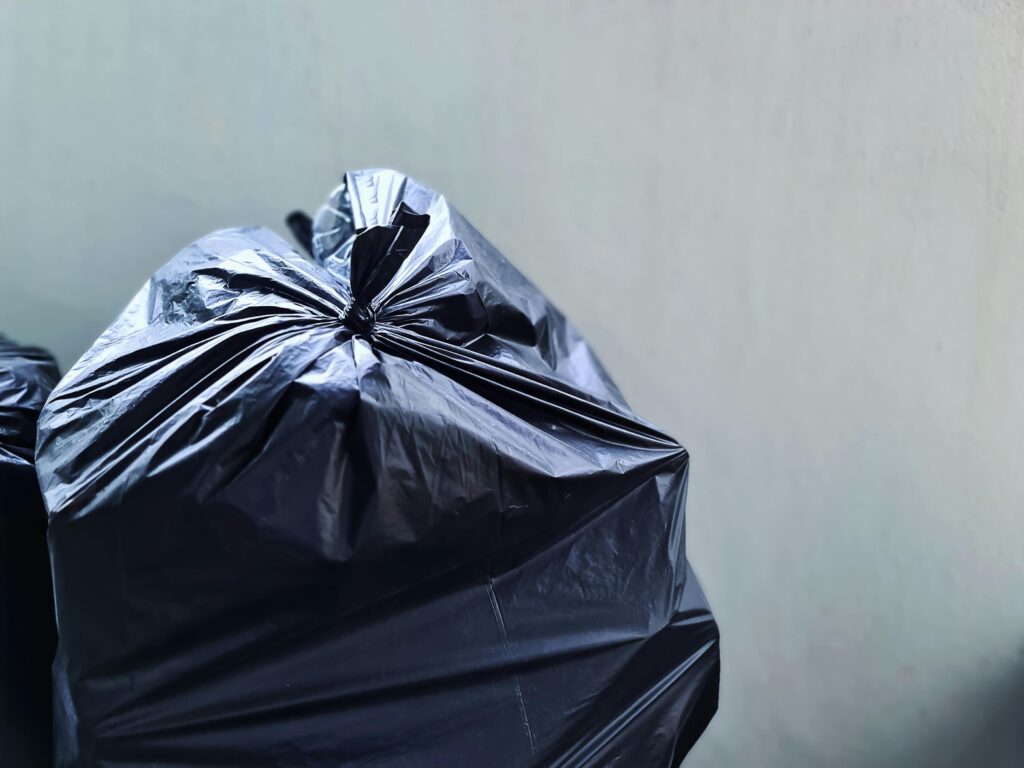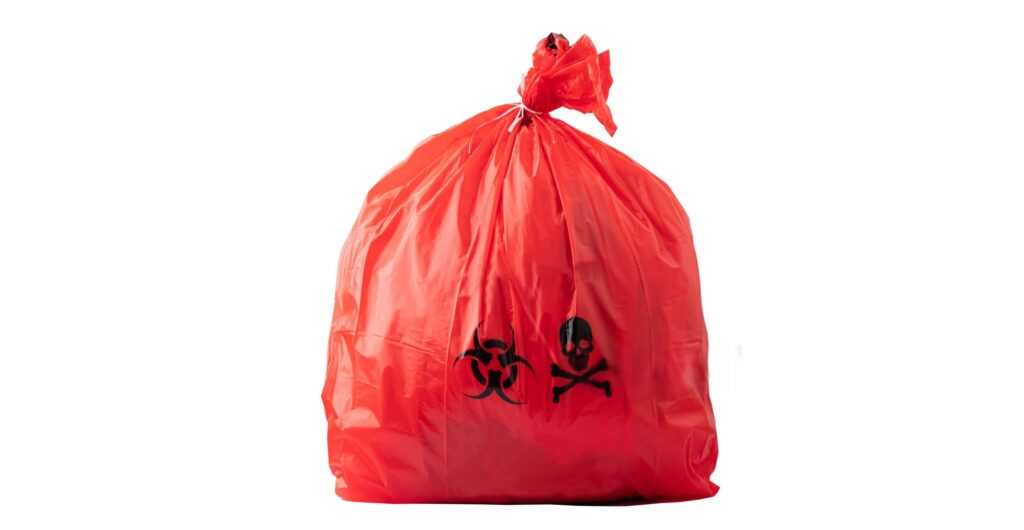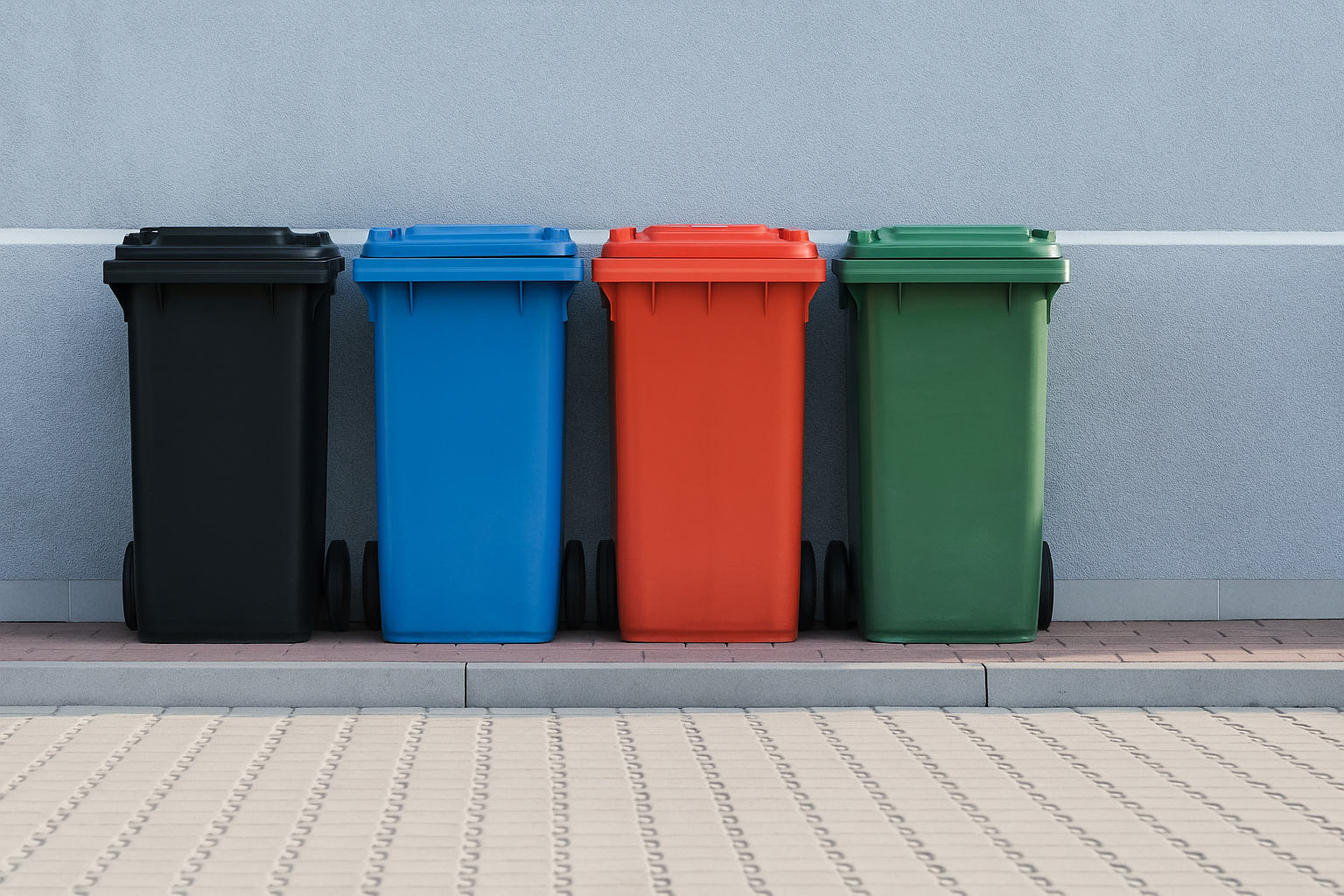Proper waste segregation isn’t just for government regulations—it’s key to a cleaner home, safer community, and a healthier planet. One of the simplest ways to practice smart waste management is by using color-coded garbage bags. But what do the colors mean?
In this guide, we’ll break down the meaning of Black, Green, Blue, and Red garbage bags, their ideal usage, and how choosing the right bag improves hygiene and sustainability. Plus, you’ll find affiliate product links to help you choose the right bags for your home or business.
1. Black Garbage Bags—For General Waste
🗑️ Use For:
Food wrappers
Sanitary waste (non-infectious)
Dust, floor sweepings
Non-recyclable packaging
Why It Matters:
Black bags are the most common and should be used only for dry, non-hazardous, and non-recyclable household waste. Overloading them with wrong items can increase landfill pressure.
2. Green Garbage Bags—For Organic/Biodegradable Waste
🌱 Use For:
Fruit and vegetable peels
Food leftovers
Garden trimmings
Coffee grounds, tea bags
Why It Matters:
Green bags are meant for compostable items. These go to composting units or organic waste plants. Using the correct bag reduces methane emissions and supports eco-friendly waste processing.
3. Blue Garbage Bags – For Recyclable Waste
🔄 Use For:
Plastic bottles
Cardboard boxes
Newspapers, magazines
Glass and metal containers
Why It Matters:
Recyclables thrown into black bags often end up in landfills. Using blue bags ensures they are sent to recycling centers, contributing to a circular economy.
4. Red Garbage Bags – For Hazardous or Biomedical Waste
⚠️ Use For:
Used gloves, masks
Soiled cotton, bandages
Sharp items (in sealed containers)
Medical waste from homes or clinics
Why It Matters:
These bags are crucial for preventing infections and protecting sanitation workers. Only use red bags for biohazardous materials, and dispose of them as per local medical waste rules.
🛒 Why Use Color-Coded Garbage Bags?
✅ Promotes easy segregation
✅ Ensures compliance with local laws
✅ Reduces contamination of recyclable materials
✅ Improves hygiene and safety
✅ Encourages eco-friendly habits
Proper waste segregation isn’t just for government regulations—it’s key to a cleaner home, safer community, and a healthier planet. One of the simplest ways to practice smart waste management is by using color-coded garbage bags. But what do the colors mean?
In this guide, we’ll break down the meaning of Black, Green, Blue, and Red garbage bags, their ideal usage, and how choosing the right bag improves hygiene and sustainability. Plus, you’ll find affiliate product links to help you choose the right bags for your home or business.
1. Black Garbage Bags—For General Waste
🗑️ Use For:
Food wrappers
Sanitary waste (non-infectious)
Dust, floor sweepings
Non-recyclable packaging
Why It Matters:
Black bags are the most common and should be used only for dry, non-hazardous, and non-recyclable household waste. Overloading them with wrong items can increase landfill pressure.

2. Blue Garbage Bags – For Recyclable Waste
🔄 Use For:
Plastic bottles
Cardboard boxes
Newspapers, magazines
Glass and metal containers
Why It Matters:
Recyclables thrown into black bags often end up in landfills. Using blue bags ensures they are sent to recycling centers, contributing to a circular economy.

3. Green Garbage Bags—For Organic/Biodegradable Waste
🌱 Use For:
Fruit and vegetable peels
Food leftovers
Garden trimmings
Coffee grounds, tea bags
Why It Matters:
Green bags are meant for compostable items. These go to composting units or organic waste plants. Using the correct bag reduces methane emissions and supports eco-friendly waste processing.

4. Red Garbage Bags – For Hazardous or Biomedical Waste
⚠️ Use For:
Used gloves, masks
Soiled cotton, bandages
Sharp items (in sealed containers)
Medical waste from homes or clinics
Why It Matters:
These bags are crucial for preventing infections and protecting sanitation workers. Only use red bags for biohazardous materials, and dispose of them as per local medical waste rules.

🛒 Why Use Color-Coded Garbage Bags?
✅ Promotes easy segregation
✅ Ensures compliance with local laws
✅ Reduces contamination of recyclable materials
✅ Improves hygiene and safety
✅ Encourages eco-friendly habits

